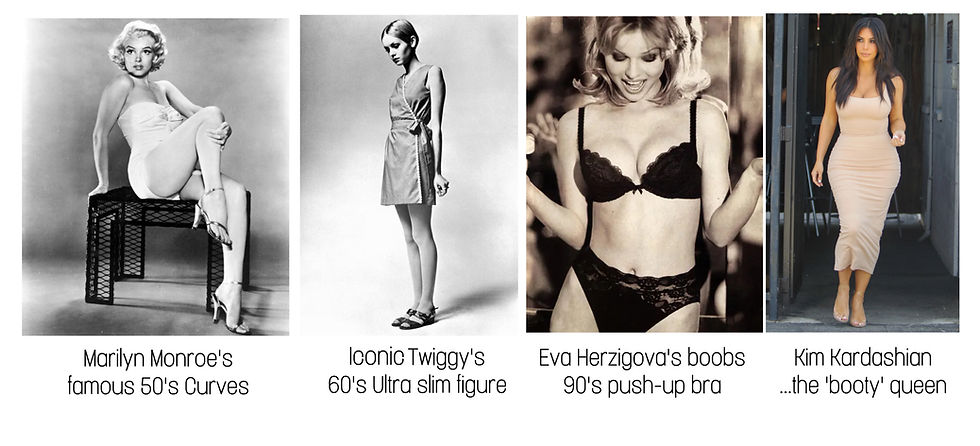Why don't my Clothes fit?
- Sarah Cross

- Nov 12, 2021
- 3 min read
The real question should be, is it your clothes or your body shape that doesn’t fit?
The number 1 problem I experience with clients is their clothes don’t fit properly.
I’m not talking is it too big, is it too small, I’m talking the fit. The body rise, the length, the armhole, the chest, the baggy bit at the back of the waistband but the squeeze to get the front button clasped shut. Ladies, you know what I’m talking about.
Let me help explain why these fit problems are happening to so many of us.
I’ll start with the Clothes element.
Clothes are made in one size, that is then graded up and down to create a selection of sizes from XS to XL. However, all these garments are the same shape, in different size increments.
Next the Human Figure.
A lady’s figure is made of unique DNA and can be described as hourglass, apple, inverted triangle, oval, petite, statuesque...etc. You can see where I’m going here; a 6ft tall, inverted triangle figure is not going to fit well in a garment designed for a petite hourglass that is sized up to the length of her limbs.
However, we can’t generalise the shape of clothes in the way I have just mentioned above because of clothing brand differentiation. I’ll explain this by using the example of jeans.
Everlane markets its jeans for the big butts; Free People boast about their boyish jean for the slim hipped ladies; And Madewell advertise 23 different fits, including tall, and very tall! Plus, we also have the movement towards non-binary fashion, with Zara debuting its ‘ungendered’ line of jeans, with a slew of denim companies releasing their own unisex collections. (But then again such is not an entirely new concept in the denim world: Back when jeans first became popular in the ‘50s, they were unisex. It has been noted that James Dean wore the same ones as Marilyn Monroe—they just styled them differently.)
Imagine all those different shapes graded across the board to meet sizes XS to XL - a lot of jeans! How on earth are you going to decipher which ones fit you?
Moving on from jeans, there’s another consideration to add to the minefield of why so many clothes don’t fit. Our changing body-shape - and I’m not talking over-eating at Christmas or middle-age spread (even though both do contribute) I’m talking evolutional changes that have happened over the last 70 years as nutrition and health industries have shown us how to look after our bodies.
Rewind to the 1950’s. Marilyn Monroe became famous for her curves. Said to be a size 16 with her 22” waist, that fact alone tells us that clothes sizing labels are constantly changing and not to be solely relied upon.
Fast forward a decade later to the iconic image of Twiggy, who was famous for her slender, straight figure. Roll on 30 years and Eva Herzigova was larger than life on every billboard sporting the push-up bra that gave us all boobs. And next it’s the 'Booty’s' turn as Kim Kardashian as truly taken the trending curvy figure to a new level.

Finally, how TREND changes our body shape.
Yes, it’s a thing.
We have the ability through eating habits and muscle building to change the condition and shape of our body up to 25% - or technically 12.5% because the 25% statistic came from an unconditioned body starting point. (Be aware it works both ways - bad eating habits and sedentary lifestyles bring on another body shape).
The overriding message here is there are 3 factors to consider when finding clothes to fit YOU:
1. Clothe sizing - changes from era-to-era & brand-to-brand, so don’t stick with one size
2. Brand differentiation - check out brand marketing campaigns to see who they are designing for and what makes their range the best
3. Know your body shape honestly - accept it as it is now, and as it changes shape
As usual, I’m here to help to you. If your clothes are generally not fitting here’s what we can do:
1. Make alterations to your existing clothes where possible
2. Identify any common re-occurring problems with fit, and address that accordingly
3. Discover the best brands that fit your body and current lifestyle
Thank you for reading
Sarah x








Comments